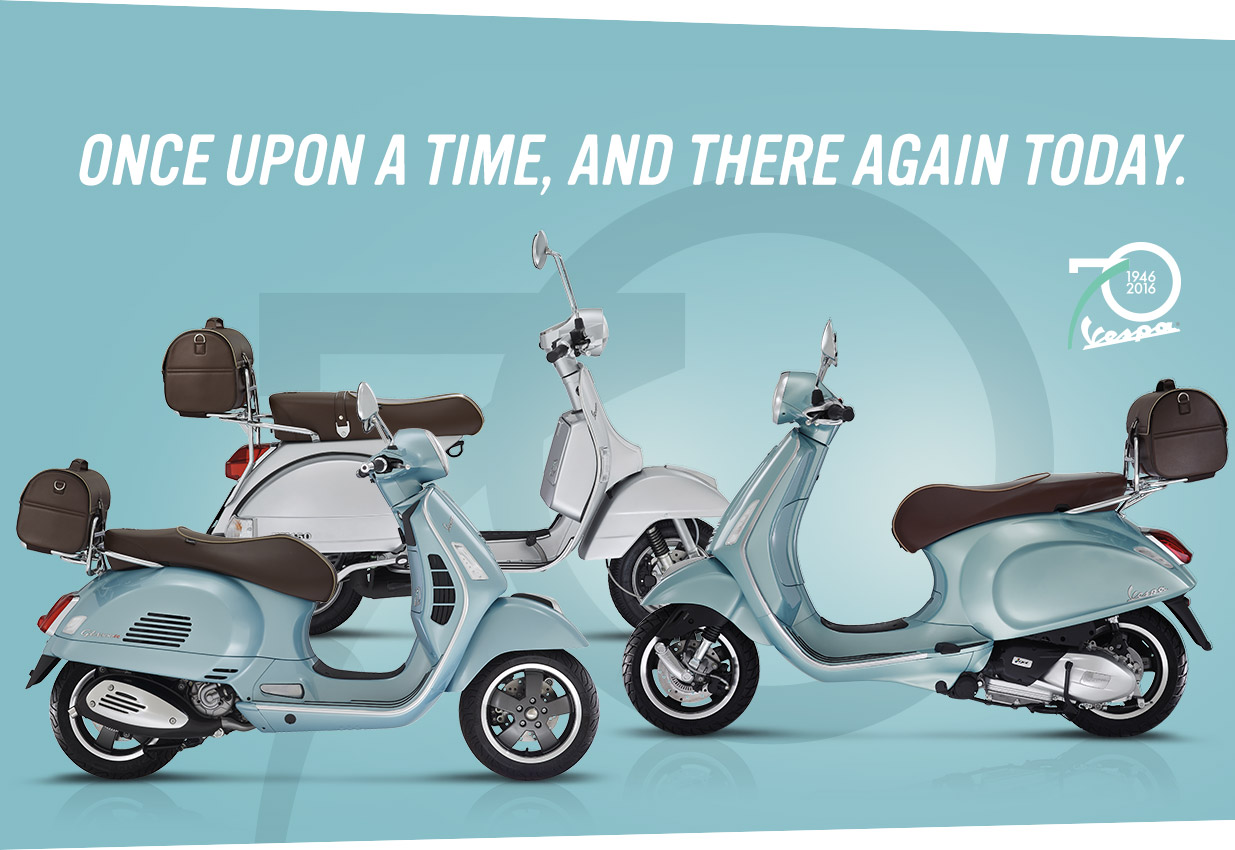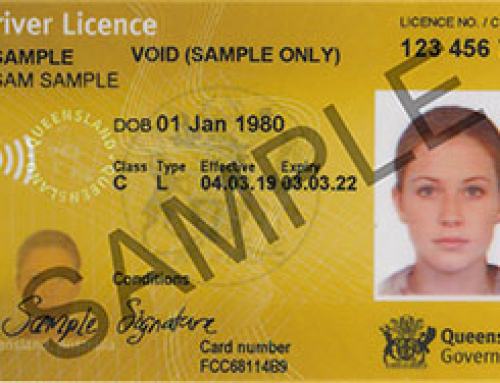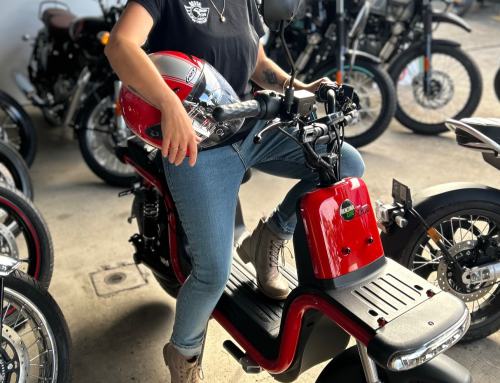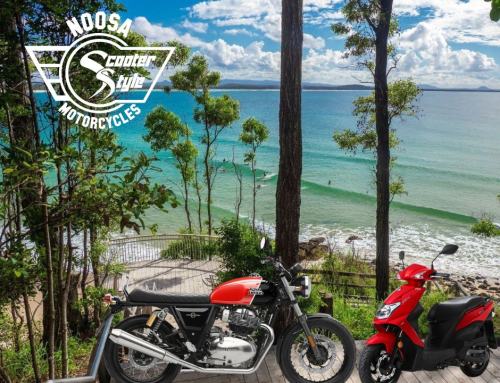Vespa 1946 to 1950
We have decided to celebrate 70 years of Vespa with a monthly chronicle of the History of Vespa from 1946 to 2016!
This month we are starting with the original Vespa 98 in 1946 to the legendary Vespa Montlhery in 1950.
Each month, we will post up a little history and pop it in our newsletter so you can find out a little more of the history of this iconic brand.
VESPA 98 1946
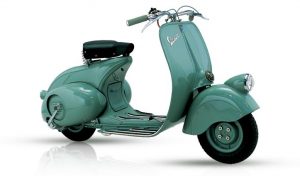
Vespa 98 1946
In April 1946, this amazing new, functional and innovative mode of transport was presented to the general public for the first time in a Golf Club in Rome. The shield was embossed with a new logo which replaced the previous Piaggio Aircraft emblem. Vespa was an immediate success and gained extensive media interest as well as public curiosity, surprise and even skepticism. The first sales of Vespa where managed through a small dealer network and the price of the standard model was 55,000 lire, while the deluxe version was sold for 66,000 lire.
VESPA 98 CORSA CIRCUITO 1947
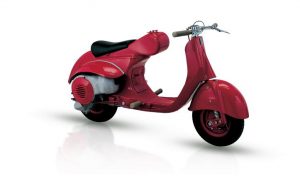
VESPA 98 CORSA CIRCUITO 1947
The Vespa 98 Corsa was built specifically to show the world the capacity of the small scooter to be competitive in races. The great swarm of Vespa which was growing in the streets and squares of Italy, motivated Enrico Piaggio to produce an aggressive vehicle, which could be an on track winner. The first to ride the Vespa 98 on circuit was Giuseppe Cau who triumphed in the Monte Mario Hill Climb in 1947. The Vespa 98 Corsa (Circuit) was built for speed and stood for innovation. The body was hand built with a steel frame. The brakes where drum, equipped with rear air vents for the cooling. The gearbox was three-speed, which enabled throttle control and the cooling was happened through an air forced ventilation. Its original color was red, that’s why this model was also known as the small “fireball”.
VESPA 98 II SERIE 1947
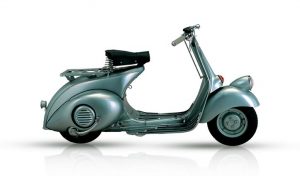
VESPA 98 II SERIE 1947
16,500 models of the second series of Vespa 98 were ever produced. This model offered significant improvements over its predecessor both in terms of the aesthetics and technical specifications. As well as this it now featured a spare wheel just in case the rider got a puncture ,which was highly likely due to the awful post-war road conditions; this highly functional element soon became one of Vespa’s most recognisable design features. The Vespa 98 was introduced with a new and improved headlamp and a metallic silver colour which reminded of the Piaggio aircraft business. Magazines reported there would be a waiting list of 8 months to get a Vespa 98 and for this reason, a thriving black market blossomed, in which Vespa was sold twice the starting price, even reaching a price of 125,000 lire!
VESPA 125 CORSA “ALLOY FRAME” 1949
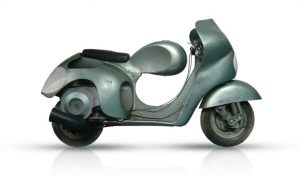
VESPA 125 CORSA “ALLOY FRAME” 1949
In 1949, Vespa was first built with a race chassis which was made from the same aluminium alloy used for the construction of aircraft and was assembled with rivets, alloy wheels and technology which was highly advanced during the 40’s.
The fuel tank and steering position, gave the rider more autonomy which resulted in the optimisation of high speed riding. Vespa 125cc Corsa participated to many competitions and celebrated many prestigious victories in 1950, with the riders Giuseppe Cau and Dino Mazzoncini achieving the first and second place in the Grand Prix of Bologna; In the same year Cau also won at the Circuit of Perugia riding Vespa 125 in the race No. 38.
Worldwide only six copies of this model along with some prototypes where ever produced by Piaggio.
VESPA 125 1949
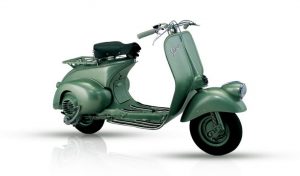
VESPA 125 1949
In 1948 Piaggio launched a new Vespa. Between 1946 and 1947, 1183 Vespa 125cc scooters were sold and marketed abroad (particularly in Switzerland). At the end of 1947 Enrico Piaggio decided to completely stop the production of Vespa 98cc and to only continue with the 125cc for the Italian and international markets. Some other model adaptations included the front suspension arm, the engine hood which was lifted up to permit an easier access to the engine and to other mechanical components. The next series of the 1949 Vespa, which is today on display in the Piaggio Museum, looked even better with the new cooling system and the renewed gearbox controls.
VESPA CIRCUITO 125 1949
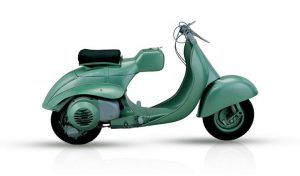
VESPA CIRCUITO 125 1949
In the late forties, the major motorcycle manufacturers considered the best way to advertise their vehicles to participate to several races. The aim was to bring the motorcycling industry to the general public with the hope of creating new potential customers. Piaggio scooters took part in races at a series of circuits; this was for the purpose of advertising the motorcycles, but the 125 circuit also proved to be an useful arena for testing new solutions, which led to adaptations of the standard models. Vespa racing scooters were completely handmade and built by specialists within Piaggio and were used in races by lots of major riders such as Dino Mazzoncini and Giuseppe Cau. Giuseppe Cau won the time trail race at the Catania Etna in 1950, arriving first in his class (125cc) and placed at the 3rd place in the overall standings after Guzzi and Benelli.
VESPA MONTLHERY 1950
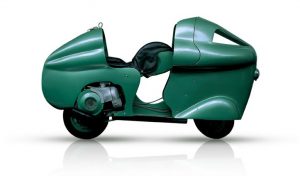
VESPA MONTLHERY 1950
To promote the sporty image of Vespa, Piaggio shifted the focus of spectators to breaking new records. On April 7th 1950, at the French circuit of Montlhery, during 10 hours of testing and three drivers who alternated riding, Vespa won in the world record time (average speed of 134 km/h) the 100 miles race (average speed 129.7 km/h), 500 miles race (average speed 123.9 km/h) and the 1,000 km race (average speed 124.3 km/h). During the 10 hours, the Vespas covered 1,049 kilometres. With a very similar vehicle to the Vespa 125 “circuit” with alloy frame of 1949, Mazzoncini achieved brilliant results in circuit racing, among which there was the victory in the class of scooter class Circuit of Genoa, there there was a challenge between Vespa and Lambretta.
You can check out our range of Vespa models by clicking here and for more information on the Vespa 70° Anniversary, click here.


